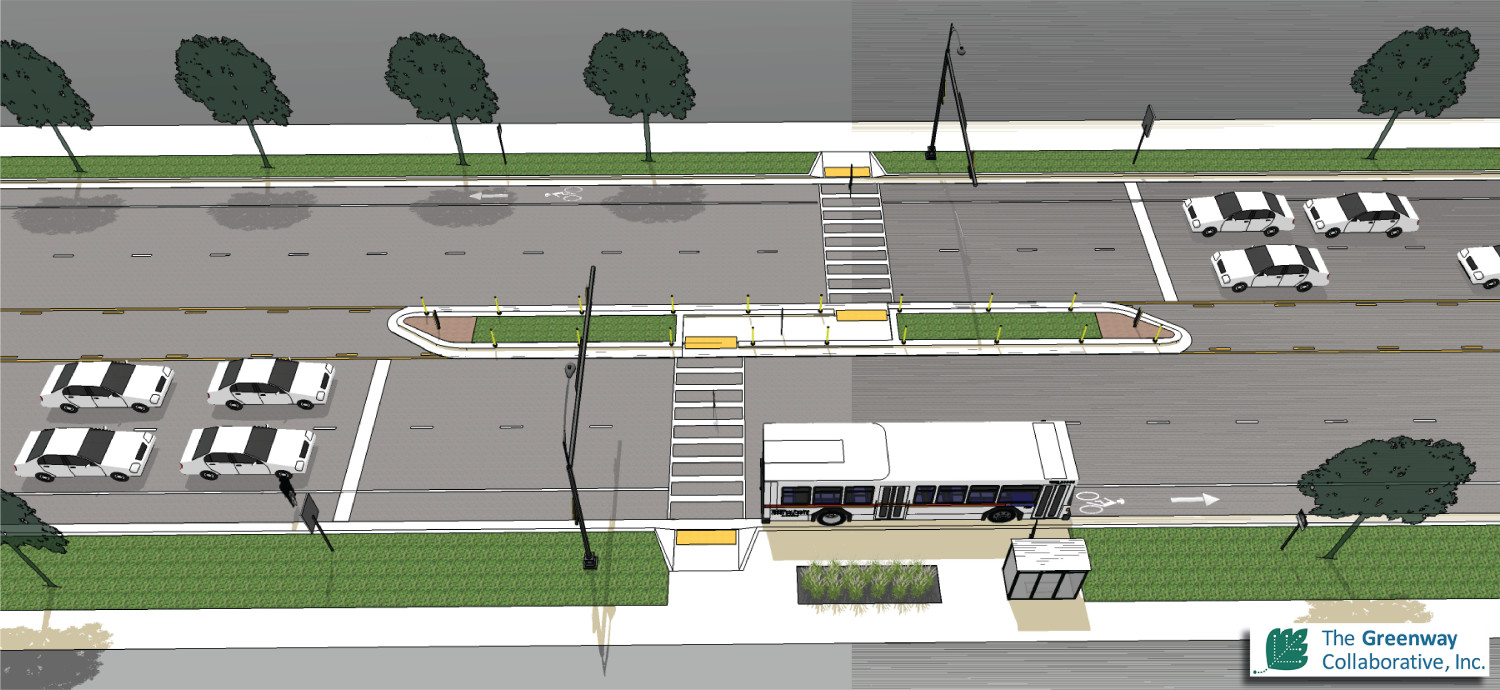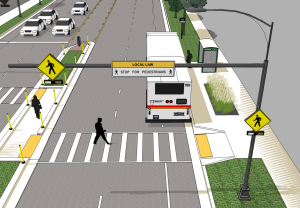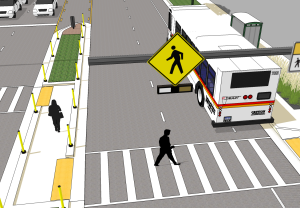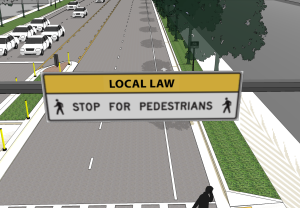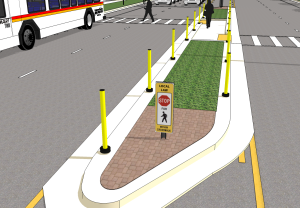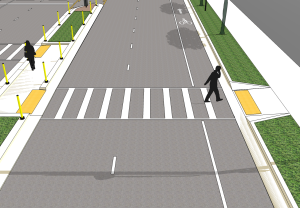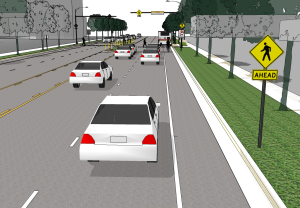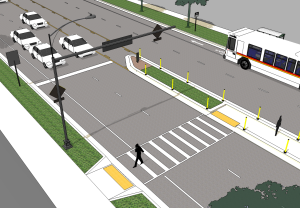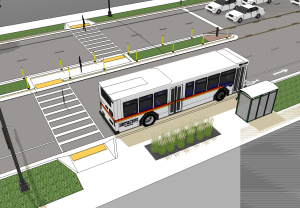Best Practice Guidelines:
Mid-block Crosswalks for Arterial Five Lane Roadways
Typically, arterial roadways in urban and suburban contexts have many things vying for a motorist’s attention in and alongside the roadway. Additionally, as a motorist’s speed increases, their cone of vision narrows. These aspects require mid-block pedestrian crossings to incorporate a number of features to alert motorists to the presence of a crosswalk and specifically drawing attention to a pedestrian who is currently crossing or waiting to cross the road.
When a crosswalk transverses multiple lanes of traffic traveling in the same direction, there is the potential for a multiple-threat crash. A multiple-threat crash happens when a vehicle in one lane stops for a pedestrian in a crosswalk and obscures the view of the pedestrian from vehicles in the adjacent lane. If the vehicle in the adjacent lane fails to stop because they did not understand why the other vehicle was stopped there may not be enough time and distance for the motorist to stop by the time they see the pedestrian walk into their lane. A combination of high visibility crosswalks, refuge islands, active warning beacons, stop bars set back from the crosswalk and crosswalk signs above and on both sides of the street can help provide better viability of pedestrians in the crosswalk.

